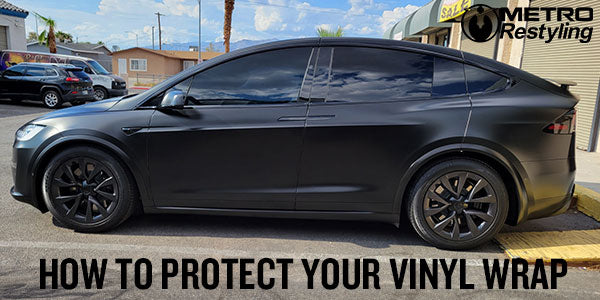Vinyl wraps have gained immense popularity in various industries, from automotive customization to architectural applications. Post-heating is a critical but often overlooked aspect of applying vinyl wrap, particularly in recessed areas. Post-heating ensures the film maintains its shape, adheres perfectly, and lasts longer.
In this blog, we'll explore:
- What can happen if the vinyl film is not post-heated correctly
- The proper temperature for post-heating
- Understanding what post-heating does
- Why post-heating helps lock the film into a new 'memory,' reducing chances of failure later

What Can Happen If Not Post-Heated Correctly
If you decide to skip the post-heating step or execute it improperly, several issues can arise:
- Peeling or Lifting: The most common problem is that the vinyl may start to peel away, especially in recessed areas with the highest tension.
- Color Fading: Vinyl film is subjected to UV rays and weather conditions; improper post-heating can lead to a quicker degradation of color.
- Shrinkage: The vinyl can contract over time without proper post-heating, causing deformities in the applied areas.
- Reduced Longevity: The lifespan of your vinyl wrap will be significantly shortened, leading to increased maintenance and reapplication costs.
-
Adhesive Failure: Adhesive properties are activated at specific temperatures. Failing to post-heat can result in the adhesive not setting correctly, causing the vinyl to lift.

Click the link to read on how to protect your vinyl wrap
Proper Temperature for Post-Heating
The ideal temperature for post-heating depends on several factors, such as the type of vinyl film used, the manufacturer's recommendations, and the specific application. However, the general guidelines are:
- Standard Cast Vinyl: Around 90 to 115°F (32 to 46°C)
- Calendered Vinyl: Approximately 100 to 110°F (37 to 43°C)
-
High-Performance Cast Vinyl: Between 105 and 130°F (40 to 54°C)
Note: Always consult the manufacturer's guidelines before proceeding, as improper temperatures can damage the film.
Understanding What Post-Heating is Doing
When vinyl is applied, particularly in recessed areas, the material experiences stress and stretching. Post-heating essentially "relaxes" the film back into a stable state.
- Molecular Realignment: At a molecular level, the vinyl goes through a structure alteration during stretching. Heating allows these molecules to relax and realign.
- Adhesive Activation: The adhesive must often be activated at specific temperatures to function optimally.
- Stress Relief: Stretching a vinyl film puts it under stress. Post-heating relieves this tension, making the vinyl more conformable and resilient to environmental factors.
- Creating Uniformity: It ensures the vinyl has a uniform look by removing any minor imperfections caused during application.

Click the link to read if it's cheaper to paint or wrap your vehicle
Keeping the Film Locked and into a New Memory
Post-heating essentially "resets" the vinyl's "memory," making it less prone to reverting to its original shape. This is particularly important in recessed areas where the film is most stretched and stressed.
- Prevents Peeling and Lifting: A properly post-heated film is less likely to experience peeling and lifting.
- Increases Longevity: The "new memory" ensures that the film doesn't contract or expand due to temperature changes, which lasts longer.
- Maintains Aesthetics: By locking in the new shape and dimensions, you preserve the aesthetic quality of the wrap for an extended period.
- Cost-Effective: Reducing the likelihood of failures means you save on the costs of reapplication and repair.
Post-heating is crucial in the installation process, especially for recessed areas. Doing it correctly ensures durability and aesthetic appeal, reducing the likelihood of wrap failures. Always adhere to manufacturer guidelines and professional standards for the best results. Make sure you check out Metro Restyling for all your vinyl tools, like heat guns to install your vinyl properly.
FAQ
Q: Can I post-heat using a standard hairdryer?
A: No, a professional heat gun is usually required to reach the appropriate temperatures.
Q: How long should I apply heat during post-heating?
A: This can vary, but generally, heat should be applied until the vinyl reaches the recommended temperature uniformly.
Q: Do I have to post-heat if I've used a primer?
A: Using a primer does not eliminate the need for post-heating. Both processes serve different purposes and are often required to achieve the best results.
Q: Is post-heating necessary for all types of vinyl wraps?
A: While it's critical for wraps that go into recessed areas, it's a good practice for all types of vinyl films for enhanced durability.


1 comment
Demetrio
Great guide, thanks im new and just into car wrapping so this helped